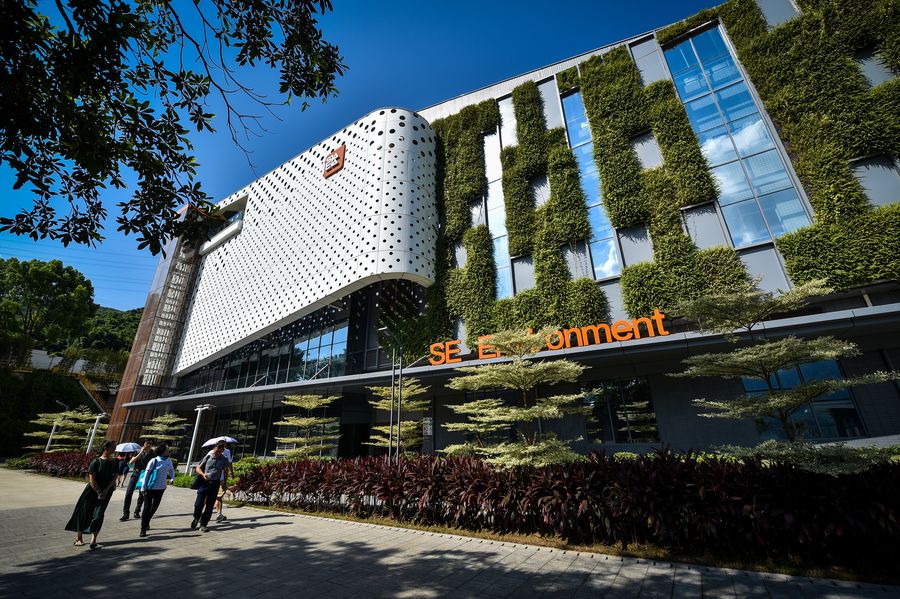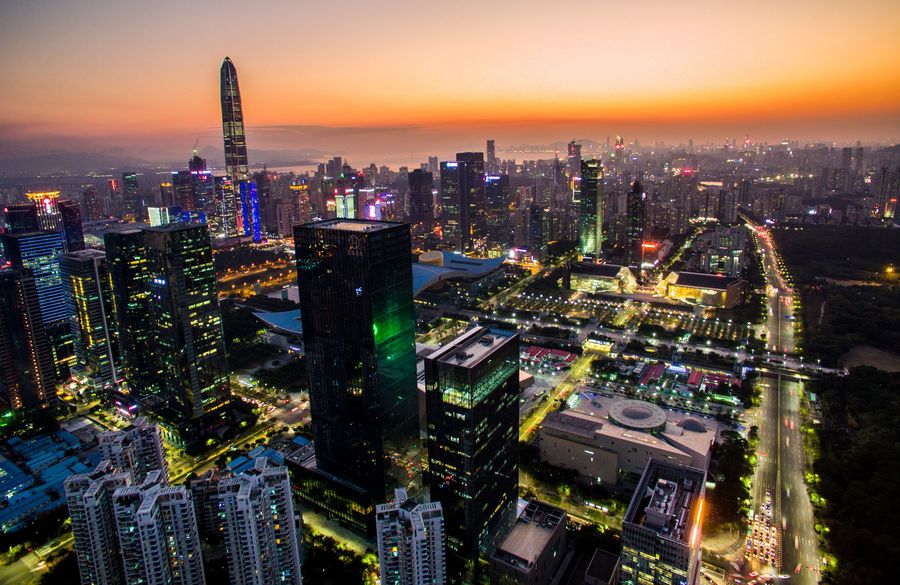
People visit a garbage-fueled power plant in the suburban area of Yantian District in south China's Shenzhen. (Xinhua/Mao Siqian)
Echoing the global sustainability campaign, China has decided to develop 10 demonstration areas across the country to promote sustainable growth with innovative practices by 2020. Six cities including Shenzhen have become such zones so far.
As China seeks innovative solutions to foster sustainable development, it can provide models for the rest of the world.
BEIJING, Nov. 22 (Xinhua) -- In the suburban area of Yantian District in south China's economic hub Shenzhen, a swan-shaped building has emerged as a popular tourist spot, where visitors can enjoy coffee with garden and mountain views.
The scenic site, known as an energy eco-park, is not just for sightseeing, but essentially a garbage-fueled power plant.
Combining advanced technologies and modern design, the park has become a green household waste incineration center as well as a hub for promoting environmental science, developing industrial tourism and offering leisure and entertainment services.
Shenzhen's energy eco-park project was one of the winners of this year's Paulson Prize for Sustainability, an award presented by the Paulson Institute and its Chinese partners to encourage innovative, scalable and market-based sustainability solutions.
China is pursuing sustainable development after decades of rapid economic growth. The country has released two reports on the progress of implementing the United Nations' 2030 Agenda for Sustainable Development since 2015.
Echoing the global sustainability campaign, China has decided to develop 10 demonstration areas across the country to promote sustainable growth with innovative practices by 2020. Six cities including Shenzhen have become such zones so far.
As China seeks innovative solutions to foster sustainable development, it can provide models for the rest of the world, the institute said on its website.

Aerial photo taken on Feb. 14, 2017 shows a night view in central Shenzhen, south China's Guangdong Province. (Xinhua/Mao Siqian)
The booming sharing economy in one highlight of China's innovative sustainable practice. The market's transaction volume surged by over 40 percent to top 2.9 trillion yuan (about 412.6 billion U.S. dollars) in 2018. Some 760 million people enjoyed sharing services ranging from transport to accommodation and catering.
Poverty reduction, one key aspect of China's sustainable development drive, also pushed various innovations. The country has mobilized resources from both the public and private sectors in developing diversified fronts of poverty relief work through industrial development, employment, education, relocation, financial services and the digital economy.
The six years between 2013 to 2018 saw more than 80 million people lifted out of poverty thanks to combined innovative efforts.
China is writing a sustainable and creative growth story as the country is seeking high-quality growth by such means as structural changes in the service sector, said Lord Nicholas Stern, chair of Grantham Research Institute on Climate Change and the Environment at London School of Economics and Political Science.
Stern observed that China has been very strong in developing solar energy, and now leads the world in rail transport, which saves on air and road transport and reduces carbon emissions. "China is very digitally advanced relative to other countries," he said. ■



